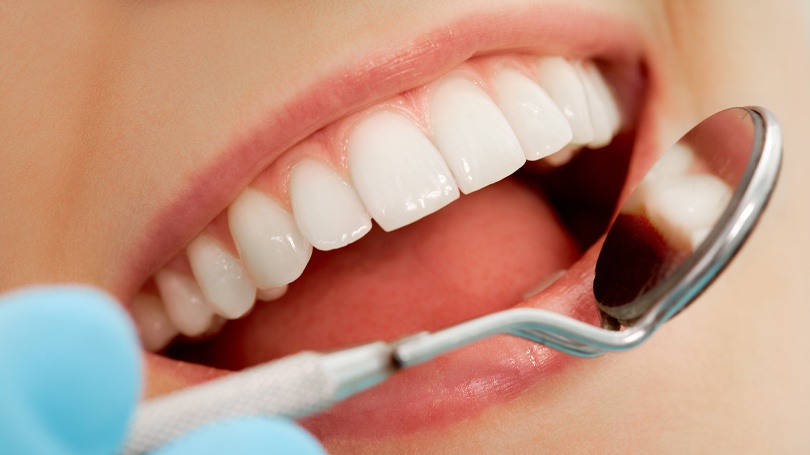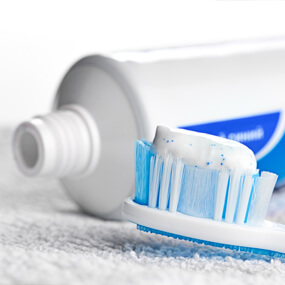Human Teeth: What Are They Made Of?

Teeth are strong and white, and they need calcium and vitamin D to be healthy. That sounds a lot like bones on the surface, which many people believe them to be. While teeth are made up of bone-like tissues, they are not, in fact, bone. A fundamental difference is that bones are wholly made up of living tissues and can regenerate, whereas teeth consist of some tissues and minerals that cannot.
Teeth Types
Adults have 32 teeth—or 28 if their wisdom teeth have not erupted yet or have been removed. Those teeth are not identical. Each has a shape and size specific to the role intended of them.
- Incisors – Your four upper and four lower front teeth are your incisors. The two frontmost are your central incisors, and the teeth to either side of them are your lateral incisors. Incisors feature a cutting—or incisal—edge because you use them to cut your food. These are often referred to as your front teeth or anterior teeth because they define your smile and are prominent when talking.
- Canines – Your canines—also known as cuspids—are called such because they are a link between the human mouth and the mouths of other carnivorous predators. These teeth are the longest in the human mouth and are generally pointed. The canines are positioned adjacent to your lateral incisors and slightly behind. They hold food and tear it and help to guide your other teeth into a proper biting position.
- Premolars – Your premolars or bicuspids are positioned adjacent to and behind your canines. The human mouth has four upper and four lower premolars, with two in each quadrant. Each pair consists of a first and second premolar with that designation indicating how close the tooth is to the front teeth. These teeth are designed to crush food and thus have three to four cusps—or grinding surfaces. This is different than the incisors and canines, which have but one cusp each. The first premolar is also different in that it has two roots. All of the other teeth discussed thus far have but a single root to secure them to the jaw.
- Molars – Your molars are your primary masticators, which means they do most of the chewing. They are designed for grinding food, and so feature flatter and broader surfaces with four to five cusps. Most molars have two roots, but an exception is the first maxillary molar, which is positioned behind the second premolar. It has three roots. There are 12 molars overall: first molars, second molars, and third molars. Third molars are often referred to as wisdom teeth, and many jawbones lack the space to accommodate them fully.
Teeth Layers
While teeth do serve different functions and thus have different sizes and shapes, they are fundamentally similar in terms of their structure. That structure comprises four layers.
- Enamel – The enamel is the outer layer of your teeth above the gums. It is the hardest tissue in the human body and is designed to protect the teeth from decay. Not only is your enamel a barrier that protects your teeth, but it also provides your teeth with the aesthetic that is associated with beautiful smiles. Enamel is strengthened by minerals like calcium, magnesium, and fluoride and can actually be restored through remineralization.
- Dentin – The dentin is underneath the enamel. It comprises living tissue and other cellular material, which means that it can regenerate like a bone can but only up to a point. The dentin is softer and more sensitive than the enamel, and it communicates sensory data from the surface of your teeth to the nerves in your teeth. In other words, without dentin, your teeth would not sense a difference between a hot bowl of soup and a cold bowl of ice cream. Dentin is yellowish in color. If your enamel wears thin, the underlying dentin can become visible, which is one reason teeth can appear more yellow than white.
- Cementum – The cementum is the calcified tissue that surrounds the tooth root. It is softer than dentin and not protected by enamel, but it is seated in the gums and protected by that tissue. It helps to keep the tooth attached to the jawbone and secure it within the gums. Cementum is essentially the foundation of your teeth. It can even repair itself and to a greater degree than any other aspect of your teeth. Nevertheless, it is important to protect the gums since infected and receding gums can compromise your cementum.
- Pulp – The pulp is a bundle of nerves, blood vessels, and connective tissues that is central to every tooth. The pulp chamber forms in a way that lets blood vessels and nerves flow from the tooth root to the crown. It is an important aspect of a tooth that not only keeps it alive and healthy but transmits signals from the dentin to the brain. Root canal therapy is generally required when a pulp becomes infected, and when tooth decay reaches the pulp, it can cause debilitating pain and make you prone to an abscess.
Your Teeth Are Complex and Precious
Your teeth can regenerate to a degree and do as part of the natural life cycle. You cannot, however, regrow your teeth. Once they are lost, they are gone for good. It is very important to take care of your enamel and your gums. Do that, and your teeth will take care of the rest. If your enamel is compromised, the underlying layers of your teeth will eventually succumb to the bacteria that attacks them.
To protect your enamel, brush with a soft-bristled brush and fluoride toothpaste. Brush twice a day for two to three minutes each time. Floss whenever you brush. Brush or scrape your tongue as well. Drink plenty of water, which rinses the mouth and promotes saliva production. You should get your teeth professionally cleaned every six months, and a regular checkup will help you stay cavity-free.
Enhance Your Oral Care
All of your teeth serve an important role and must be protected. With proper oral care, there is no reason you cannot enjoy all of your teeth throughout your life. Good oral hygiene at home is essential, but you should also visit your dentist at least every six months for a cleaning and checkup. Jeffrey D. Clark, DDS, is a leading dentist in Arizona who can provide you sophisticated oral care and help you perfect your oral hygiene routine. Call Scottsdale Cosmetic Dentistry Excellence at 480 585 1853 to schedule your appointment.




